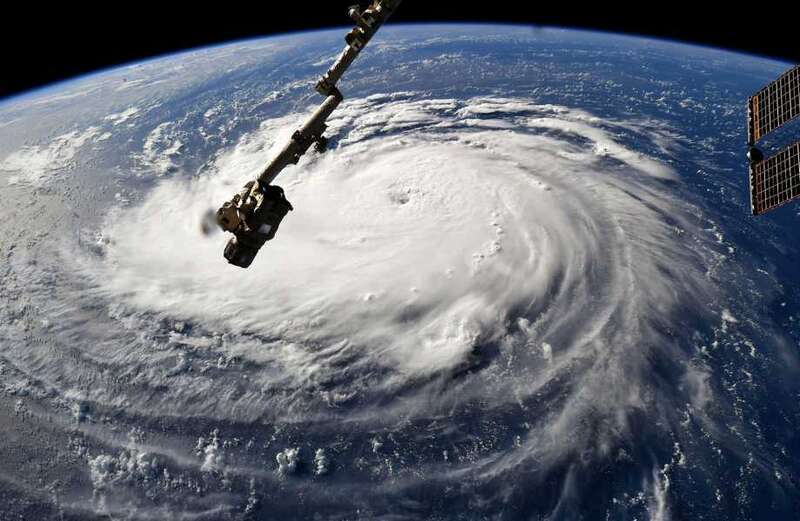HURRICANE Dorian reached category 5 and claimed at least 50 lives when it hit the Bahamas in 2019.
Here's a guide to how hurricanes form and an explanation of the different categories used to rate their destructive power.

What is a hurricane and how do they form?
A hurricane is another name for a tropical cyclone - a powerful storm that forms over warm ocean waters near the equator.
Those arising in the Atlantic or eastern Pacific are called hurricanes, while those in the western Pacific and Indian Ocean are dubbed typhoons or cyclones.
North of the equator they spin anticlockwise because of the rotation of the earth, however, they turn the opposite way in the southern hemisphere.
 Are there illegal baby names? Surprising monikers that are BANNED in other countries, from Sarah to Thomas
Are there illegal baby names? Surprising monikers that are BANNED in other countries, from Sarah to Thomas
Cyclones are like giant weather engines fuelled by water vapour as it evaporates from the sea.
Warm, moist air rises away from the surface, creating a low-pressure system that sucks in air from surrounding areas - which in turn is warmed by the ocean.
As the vapour rises it cools and condenses into swirling bands of cumulonimbus storm clouds.
The system grows and spins faster, sucking in more air and feeding off the energy in seawater that has been warmed by the sun.
At the centre, a calm "eye" of the storm is created where cooled air sinks towards the ultra-low pressure zone below, surrounded by spiralling winds of warm air rising.
The faster the wind, the lower the air pressure at the centre and the storm grows stronger and stronger.
Tropical cyclones usually weaken when they hit land as they are no longer fed by evaporation from the warm sea.
But they often move far inland - dumping vast amounts of rain and causing devastating wind damage - before the "fuel" runs out and the storm peters out.
Hurricanes can also cause storm surges when the low air pressure sucks the sea level higher than normal, swamping low-lying coasts.
What are the different hurricane categories on the Saffir-Simpson scale?
When wind speeds reach 39mph a storm is officially classed as a Tropical Storm, while above 74mph it is called a Category One hurricane.
 All about Rachel Nickell who was murdered in front of her son Alex Hanscombe
All about Rachel Nickell who was murdered in front of her son Alex Hanscombe
A storm heading towards Britain in October 2017 - Hurricane Ophelia - was upgraded to a category one hurricane after its winds were measured at 75mph.
Further categories up to a maximum of five are available for very powerful storms, with those of Category three and above considered a "major hurricane."
The Saffir-Simpson scale was devised in 1971 by civil engineer Herbert Saffir and meteorologist Robert Simpson, head of the US National Hurricane Centre.
It was introduced to the public in 1973 as a means of communicating the danger of upcoming storms so that populations could better prepare.
The scale was tweaked in 2009 to remove air pressure and storm surge ranges, transforming it into a pure measurement of wind scale.
It helps to paint a clear picture of the damage to buildings that can be expected from hurricane-force winds, although it does not take account of the potential devastation caused by monsoon downpours or tidal storm surges caused by the low air pressure.
The categories are as follows:
- Category one: Wind speeds 74-95mph — very dangerous winds will produce some damage
- Category two: Wind speeds 96-110mph — extremely dangerous winds will cause extensive damage
- Category three: Wind speeds 111-129mph — devastating damage will occur
- Category four: Wind speeds 130-156mph — catastrophic damage will occur
- Category five: Wind speeds 157+mph — areas will be completely razed

What is the strongest category of hurricanes?
The strongest category of hurricane is category 5, with winds of over 157mph.
Hurricane Dorian hit category 5 after beginning as a tropical storm in 2019.
Hurricane Katrina, the single most catastrophic natural disaster in US history, was also a category 5 hurricane. It killed 1,833 and caused $108billion of damage in Louisiana and neighbouring states in late August 2005.
Hurricane Irma in 2017 was also classified as a category five storm. It was the most powerful Atlantic hurricane ever recorded with sustained winds of over 185mph and gusts of 220mph.
Irma devastated a number of islands in the Caribbean before smashing into Florida on the US mainland.
It followed hot on the heels of category four Hurricane Harvey, which caused catastrophic flooding in Texas.
Hurricane Jose, following a similar path, reached category three with winds above 110mph.
When is hurricane season in the Atlantic?
Hurricanes form when the ocean is warm. In the Atlantic, this means the summer and autumn.
Meteorologists class the Atlantic hurricane season as running from June 1 to November 30, although intense storms can happen outside these dates.
An average Atlantic hurricane season produces 12 named storms, of which six become hurricanes and three major hurricanes.



































